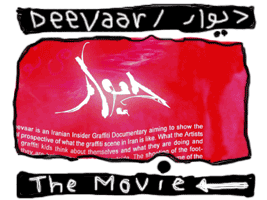Rufino Tamayo


Rufino Tamayo (1899 -1991)
Mexican Painter and Print maker
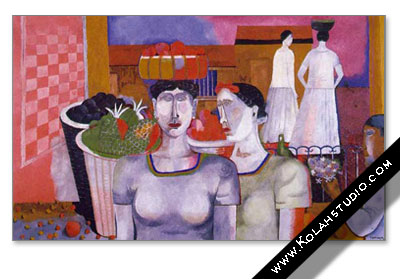
Rufino Tamayo’s standing in twentieth century Mexican art is markedly different from that of Los tres grundes, or Mexico ‘s muralists Diego Rivera, Jose Clemente Orozco and David Alfaro Siqueiros. Unlike Tamayo, the muralists dedicated their art to the promotion of the Mexican Revolution’s socialist ideals. Tamayo painted on an easel and his models were the masters of Modern Art, Picasso, Cezanne, and Braque. His subjects, however, however abstractly treated, were Mexican to the core. A serious collector of Pre-Columbia Mexican art, Tamayo, whether living in New York , Paris , or Mexico City , tried to find the soul of a modern Mexico in the sculptures of its pre-European past. Likewise, his colors owed nothing to the European artists who interested him, but reflected the skies, earths, and landscapes of Mexico as well as the dyes used in Mexican clothes. Rufino Tamayo divorced himself and his art from politics, ardently believing that his art should be painted for art’s sake.
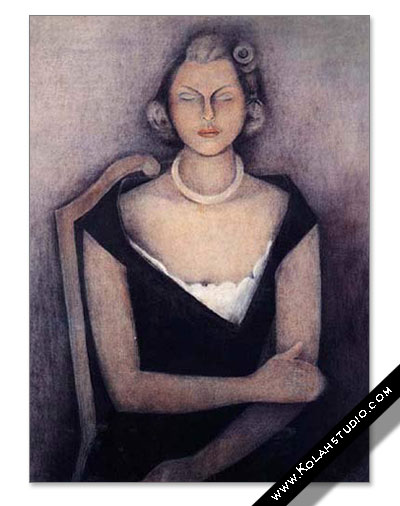
Rufino Tamayo had been interested in depicting the human figure as early as his academic training in the 1920s. As Tamayo became more interested in European modernism, his method of painting evolved. While living in Mexico , he was very interested in depicting the everyday lives of Mexican peasants. The intent of this imagery was not to convey socio-political messages. Tamayo simply was interested in representing Mexican subjects. It was in the early 1940s that Tamayo, painting the human figure, began breaking it up into fragments. During this period he became more interested in the development of a composition, intensifying the geometry and color abstraction of its figures. The use of dark earth tones dominated his artwork through the 1940s. Le flautista is an extraordinary painting which celebrates Tamayo’s expert use of color incorporating blues, greens, ochres and browns.
The lyrical painting El flautista was painted in 1944, an era when Rufino Tamayo had developed his own pictorial language separate from that of the other Mexican modernists. Tamayo’s unique interpretation of figures through geometric color abstraction places him in the international cadre as one of our century’s masters.
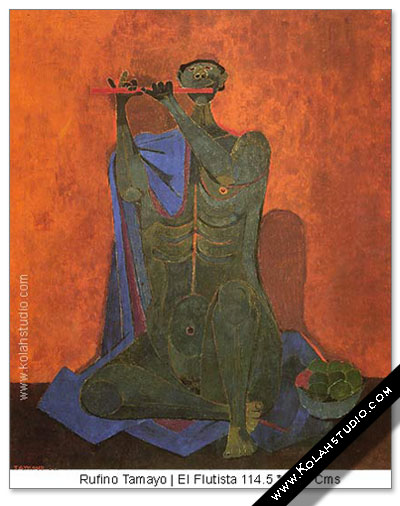
El flautista is a key painting in that the artist is still rendering the human in a figurative manner. One can-sec upon close examination, that a rhythmic pattern of ochres and browns have been placed successively in order to delineate the torso. The arms and legs of the flutist have been reduced to simple complementary geometric shapes which also define the body. The shawl which drapes from the shoulder has been abstracted to simple rectangles and trapezoids. Finally, the earth on which the flute player sits has been reduced to a brown rectangle and the horizon and sky are a deep burnt orange.
Musicians, fruit vendors, and still lifes were preferred subjects of the artist, reappearing in his compositions throughout his seventy-four year career. The bowl of fruit which rests to the flutist’s left side is another favorite device of Rufino Tamayo. After the artist was orphaned as a child, he moved to Mexico City to live with his aunt, where he assisted her selling fruit in the market. This experience undoubtedly left a lifelong impression on the artist as he depicted fruit, especially the watermelon, in many of his compositions.
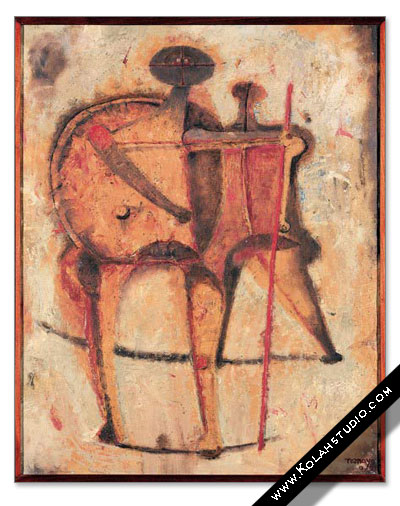
Although he had made many lithographs, including series on the Apocalypse and series on Mexican women, Tamayo began to experiment with etchings late in his life. In 1974 he began working at the Mixografia Workshop in Mexico City, where he combined molded relief printing with lithography, usually beginning by making a lithographic tone plate, working in wax, which was then used as a model for copper plates, and printing them on top of the lithographic background, producing a rich, three-dimensional surface. In 1979 and 1980, Tamayo worked at Ediciones Poligrafa in Barcelona , combining carborundum plates (copper plates sculpted with epoxy resins, and etching. The three works below are the products of Tamayo’s first sojourn at Poligrafa and include some of his richest graphic works.
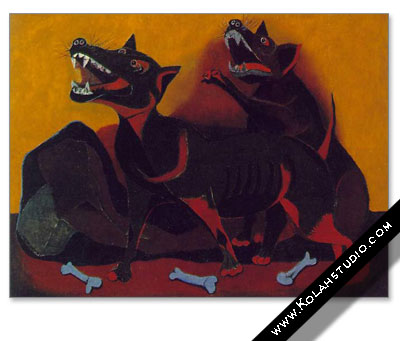
Web Resources:
artchieve.com | spaightwoodgalleries.com | Adani Gallery
Published and Books:
1- Sotheby’s | Mexican Paintings and Drawings From the IBM International Foundation ,Sotheby Publisher ,New York ,1995.

